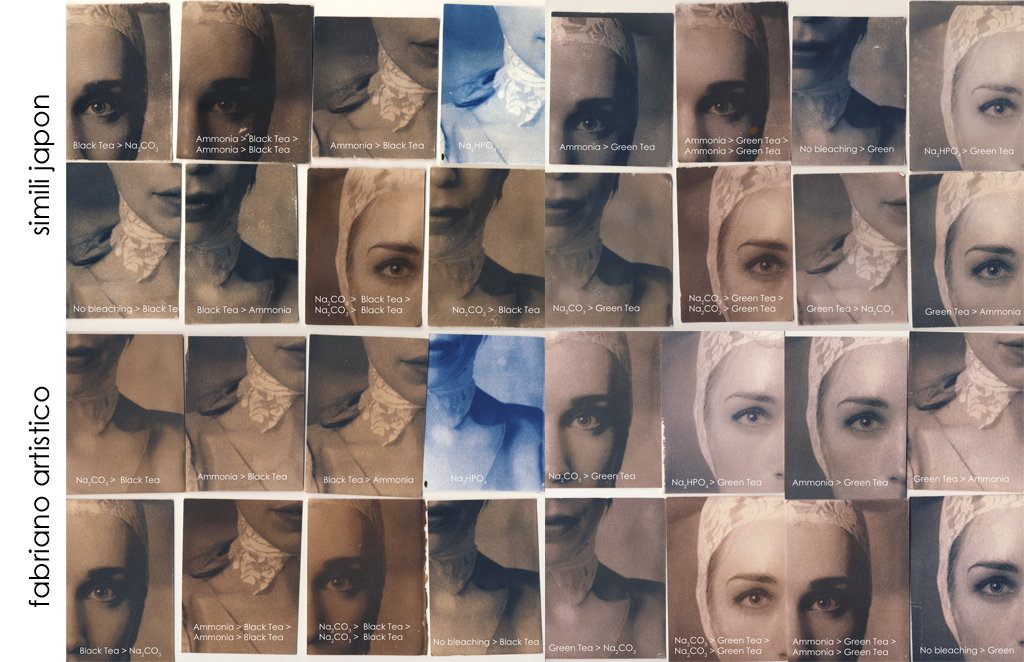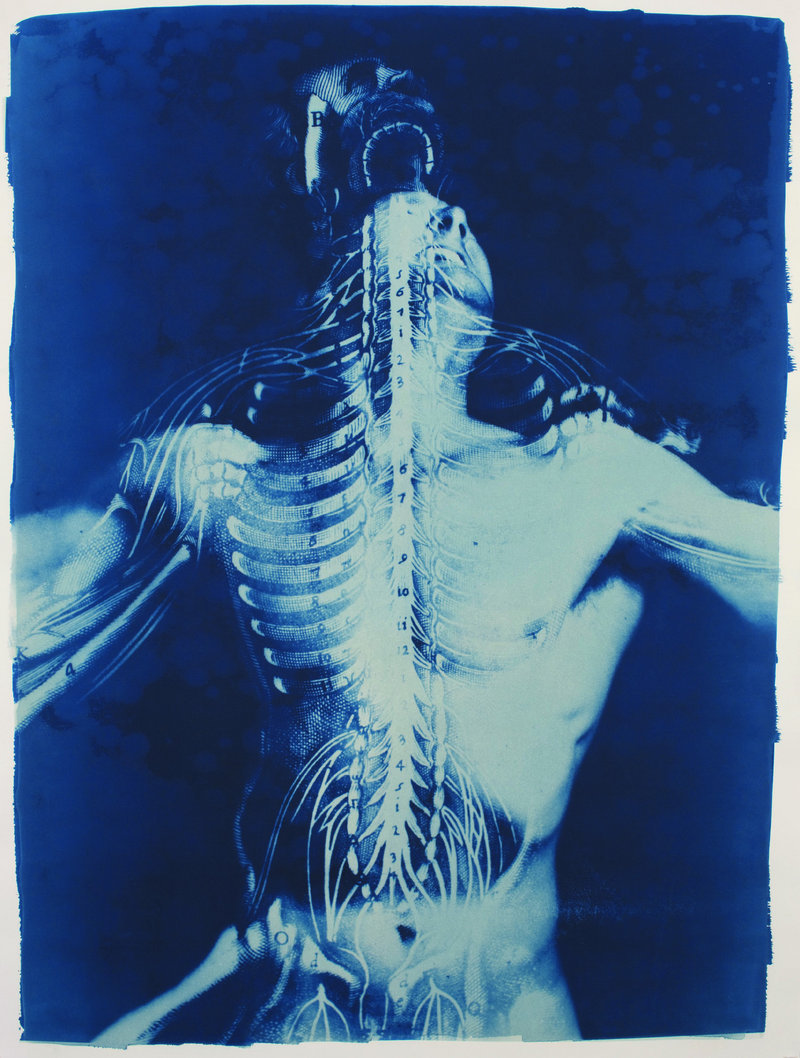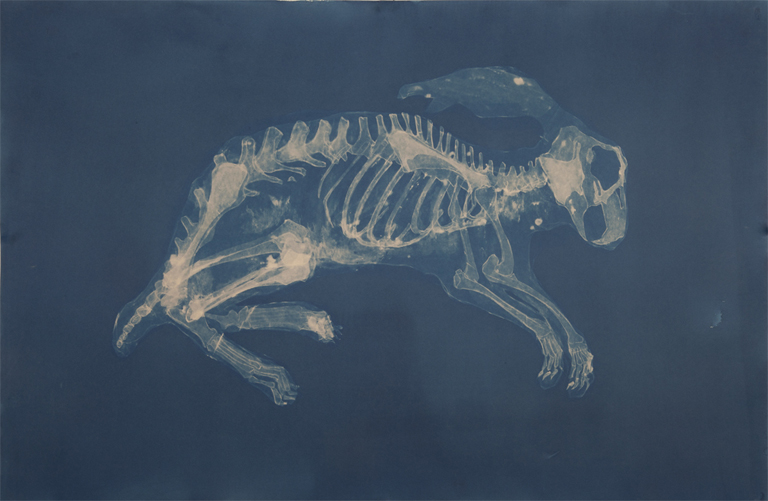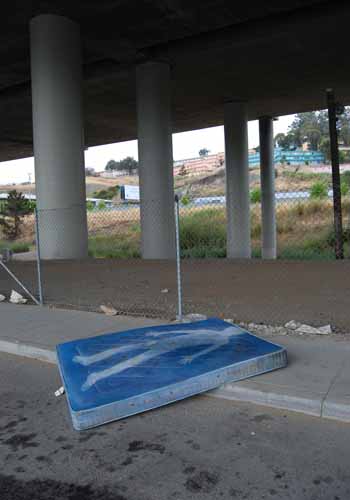Cyanotype mixing instructions. They call it the 'Classic Cyanotype' process. That's accurate. It's simple and only requires two relatively benign chemicals. The 'New Cyanotype' process requires the use of a more dangerous chemical, so we aren't going that route, nor is it necessary to do so are we will be making our own digital negatives allowing us to control contrast that route.
This is the recipe that we will be using through out the course.
You apply the curves to the image (if necessary), then turn it into a negative by inverting it. Then you print it out on transparency.
Expose Notes:
It is better to over expose your prints and then bleach them down as opposed to trying to get the exact times (especially true if you are exposing in the sun).
SURVEY OF EXPOSURE TIMES - should provide a good jumping off point.
Some papers that have been recommended for cyanotypes by knowledgeable folks:
Canson Montval watercolor
Arches Platine
Fabriano Artistico
Lana
Arches Acquarelle
Saunder’s Waterford
Somerset Book
Crane’s Platinotype.
Reading homework:
Read Chapter 10 of the Robert Hirsch's book Photographic possibilities : the expressive use of equipment, ideas, materials, and processes The book is available for free in its entiretly via UM's online library offerings. If the direct link above doesn't work, do a search in Miryln for it and it will pop up.
Excellent excerpt on Cyanotype from Christopher James' book on Alternative Processes. It includes a nice section on toning cyanotypes. I suggest you read the entire Chapter/PDF.
Great thread on toning cyanotypes using a sodium bicarbonate 'bleaching' phase before soaking the print in a tannin rich solution of tea of coffee.
Excellent discussion of toning cyanotypes. Really excellent. Be sure to read it as it goes over what kind of results you can expect from the various toners and methodologies.
Below is an excellent image by Simili Japon illustrating the affects of multiple different toners on Cyanotype prints.
Another artist who made a similar 'ring a round' of toned cyanotypes. Visit his blog to see what's what.
Artists working with Cyanotype (my attempt is to show you a broad range of ways in which contemporaty artists are working with Cyanotypes)
Ginger Owen-Murakami prints cyanotypes on newsprint and combines them with other media.

Nice series of toned Cyanotype prints by Emma Powell.
Robin Hill incorporates large scale Cyanotypes into installations.
Christian Marclay - MOMA bought one of his pieces in 2008 and had some of his work on display in 2012-2013
Christian Marclay - Cyanotypes from JRP|Ringier on Vimeo.
Natalie Cheung
Thomas Hager
Anna Hepler
Miles McNulty - part of a very cool art project in which artist made works on abandoned ledgers and such form a former factory. From the site, "Much more than the usual bound version of a poetry chapbook, ampersand is a collection of poetry and visual art printed, drawn and written on the pages of invoices, bills, advertisements, checks, ledger sheets, folders, binders and every other kind of suitable surface found in files that had not seen light for 40 or 50 years since the building shut down as an industrial site."
Arturo Herrara - he was featured in an ART 21 segment. If you like distressing film and such, then you should really read up on him. His work appeared in MOMA. He is a kind of a big deal.Gray Lyons - large scale Cyanotypes
Tasha Lewis prints onto cloth and makes sculptures from them.
Traci Marie Lee
Carrie Witherell
Dustin Fosnot
Robert Rauschenberg - yes, that Robert Rauschenberg
making of the image
BlueOnWhite - Tumblr site with a great variety of cyanotypes
Video in which the artist tones cyanotype prints using TSP (branded name of a common cleaner made of Trisodium Phosphate) to 'bleach' the cyanotype before soaking the print in tea.
Nice video by Scott Barnes on the process. He uses a test strip to determine the exposure for the prints. Interesting technique.
PDF of the instructions of the Cyanotype solution that we are using.
How to make a digital step Wedge
Nice write up on how to make a cyanotype using a digital negative
Alternative Photography article on sizing paper which includes instructions on how to size paper using arrowroot starch.
Photographer's Formulary instructions for preparing Arrowroot Starch for Sizing:
Your kit contains 20g of arrowroot starch. Place this starch in a 1-liter container that you can heat (such as a sauce pan) and add a small amount of hot water (about 20 ml) Stir the mixture into a thick cream. Be sure that no lumps remain. Add 1 liter of hot water with constant stirring. Boil the mixture for 5 minutes, then let it cool to room temperature. Skim off any scum or decant the clear solution into a storage container.
Another write up on the process of creating a digital negative
Nice write up on the entire process of making the digital negative, mixing the chems, and making the final print.
iPhone to Cyanotype
Cyanotype tutorial on the Martha Stewart website. Funny.
This guy make cyanotype 'negatives' directly in camera. He is using pre-made stuff, but should work using homemade emulsions as well.
Apparently this guy makes glass Cyanotypes negatives. Here is a link to his homepage. He's very into historical and alternative photographic processes.








.jpg)














No comments:
Post a Comment